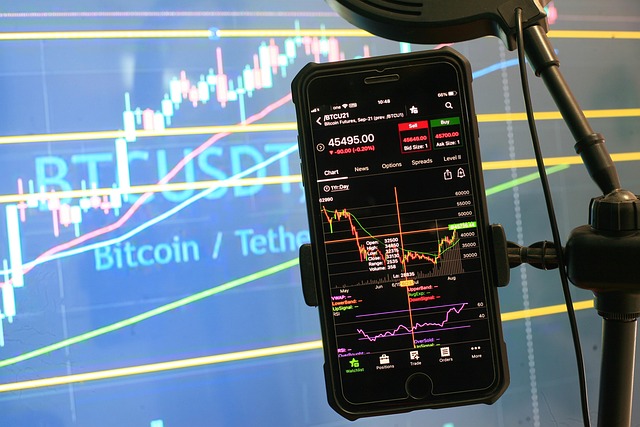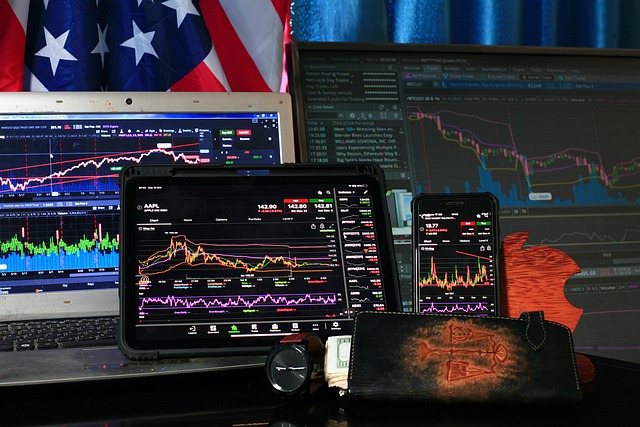What Is the Daily Trading Volume of Crypto? An In-Depth Analysis for Traders and Investors
Author: Jameson Richman Expert
Published On: 2025-10-07
Prepared by Jameson Richman and our team of experts with over a decade of experience in cryptocurrency and digital asset analysis. Learn more about us.
Understanding the daily trading volume of cryptocurrencies is a cornerstone metric for assessing market activity, liquidity levels, and overall sector health. For traders, investors, and financial analysts, this indicator provides invaluable insights into market engagement, asset stability, and potential trend shifts. Accurate interpretation of daily volume data not only enhances strategic decision-making but also aids in identifying emerging opportunities and gauging the strength or fragility of current market movements. This comprehensive analysis explores the intricacies of crypto trading volume, traces its historical evolution, examines key influencing factors, and discusses strategic applications for market participants seeking to optimize their trading and investment outcomes.

Defining Daily Cryptocurrency Trading Volume: Beyond the Basics
At its core, the daily cryptocurrency trading volume quantifies the total monetary value of all buy and sell transactions across various trading venues within a 24-hour window. This encompasses a broad spectrum of trading activities, including:
- Spot trading on centralized exchanges
- Derivatives and futures contracts
- Margin trading with leverage
- Decentralized exchanges (DEXs)
- Over-the-counter (OTC) transactions
The reported volume provides a snapshot of market participation, liquidity depth, and trader confidence. Elevated trading volumes typically indicate a vibrant, liquid market conducive to executing large orders with minimal slippage, thus maintaining price stability. Conversely, diminished volumes can signal market stagnation, reduced investor interest, or increased susceptibility to price manipulation, often resulting in heightened volatility and unpredictable price swings. Recognizing these nuances allows traders to better interpret market signals and adapt their strategies accordingly.
Historical Trends and Market Evolution
Over the past decade, the cryptocurrency landscape has undergone a remarkable transformation in trading volume, reflecting its journey from a niche digital asset to a mainstream financial instrument. Initial trading activities were modest, primarily driven by early enthusiasts and dedicated crypto communities. With technological advancements, institutional entry, and expanding retail participation, daily volumes have surged exponentially. Notable innovations such as decentralized finance (DeFi), non-fungible tokens (NFTs), and algorithmic trading platforms have contributed to this growth. According to aggregators like CoinMarketCap and CoinGecko, the combined daily trading volume for the entire crypto market frequently exceeds $200 billion, exemplifying increased liquidity and diversified trading instruments across the globe. This evolution underscores the critical role of trading volume as a barometer of market vitality, investor interest, and overall sector health.
Key Factors Influencing Cryptocurrency Daily Trading Volume
Multiple interconnected factors influence daily cryptocurrency trading volume, shaping market dynamics and trader behavior. Understanding these influences enables market participants to anticipate volume fluctuations and interpret market signals with greater accuracy:
- Market Liquidity: Robust liquidity pools on leading exchanges facilitate seamless transactions, enabling traders to execute large orders without significant price impact. Liquidity depth directly correlates with higher trading volumes and more efficient price discovery.
- Market Sentiment and News Events: Positive developments such as regulatory approvals, protocol upgrades (like network forks or scalability improvements), or institutional investments typically trigger volume surges. Conversely, negative news—such as security breaches, regulatory crackdowns, or macroeconomic uncertainties—can lead to volume declines or panic selling.
- Regulatory Environment: Clear, supportive regulations foster confidence and encourage trading activity. In contrast, regulatory ambiguity or restrictive policies may suppress volumes or push traders toward decentralized and offshore platforms.
- Trading Infrastructure and Accessibility: User-friendly interfaces, competitive fees, advanced trading tools, and high-security standards attract a broader user base, increasing daily activity. Integration of APIs and institutional-grade trading platforms further amplifies trading volumes from professional market players.
- Market Cycles and External Macro Factors: Economic indicators such as inflation rates, currency fluctuations, geopolitical tensions, and macroeconomic cycles influence trading activity. During times of economic uncertainty or bullish markets, volume often spikes as traders seek hedging opportunities or capitalize on volatility.

The Crucial Role of Crypto Exchanges in Shaping Trading Volume
Exchanges serve as the primary venues for crypto trading, playing a pivotal role in determining reported trading volumes and overall liquidity. Dominant platforms such as Binance, Coinbase, Kraken, and Huobi facilitate the majority of daily transactions. Their technological infrastructure, fee structures, security protocols, and available trading pairs directly influence reported volumes. For example, Binance often surpasses $30 billion in daily trading volume during peak activity, highlighting its dominance in the global ecosystem.
The selection of an exchange affects trading strategies, especially for high-frequency traders and institutional investors seeking optimal execution conditions. Factors to consider include:
- Liquidity depth and order book transparency
- Security records and past breach history
- Fee structures and fee transparency
- Range of supported trading pairs and derivatives
- Availability of advanced trading tools and APIs
Tools and Data Sources for Measuring and Analyzing Daily Trading Volume
Accurate analysis of trading volume necessitates comprehensive tools and reliable data sources. Platforms such as CoinMarketCap, CoinGecko, TradingView, and CryptoCompare aggregate real-time and historical volume data across numerous exchanges. These tools enable traders to identify volume trends, spot anomalies, and validate breakout signals with higher confidence.
Key metrics include 24-hour volume per asset, exchange-specific volumes, trading pairs, and historical data visualizations. Combining volume data with liquidity metrics and on-chain analytics provides a more holistic view of market activity. Notably, differentiating between high trading volume and high liquidity is essential—while volume indicates activity levels, liquidity measures how easily assets can be bought or sold without impacting the price significantly.
Impact of Trading Volume on Market Trends and Price Movements
Trading volume is a fundamental indicator of market strength and trend validity. Rising volume during bullish phases affirms the sustainability of upward price movements, reflecting strong buyer interest. Conversely, volume spikes during declines often indicate panic selling or profit-taking, potentially signaling exhaustion or reversals. Recognizing volume patterns—such as divergences, spikes, or declining activity—helps traders differentiate between genuine breakouts and false signals or potential manipulation.

Incorporating Volume Analysis into Trading Strategies
Sophisticated traders integrate volume analysis with technical and fundamental indicators to enhance decision-making accuracy. Common strategies include:
- Breakout Confirmation: A price breakout supported by high volume suggests a more sustainable move, reducing false positives. Breakouts on low volume are often suspect and prone to failure.
- Volume Divergence: When price advances are not accompanied by corresponding volume increases, it may indicate weakening momentum or an impending reversal.
- Volume Spikes and Clusters: Sudden surges in volume can highlight critical support/resistance levels, potential trend reversals, or lucrative entry points. Monitoring on-chain metrics and order book depth further refines these signals.
Automated trading tools, such as bots and algorithmic strategies, leverage real-time volume data to trigger alerts and execute trades efficiently. Resources like free trading apps and educational content on transaction costs and order execution help traders optimize their strategies and minimize risks, especially in volatile conditions.
The Future of Cryptocurrency Trading Volumes and Market Development
Projected growth in daily trading volume is expected to continue, driven by technological progress and broader adoption. Layer 2 scaling solutions—including zk-Rollups, Optimistic Rollups, and state channels—are set to drastically improve transaction throughput, reduce fees, and enhance user experience. These advancements will facilitate higher activity levels, deeper liquidity pools, and more sophisticated trading products.
Institutional participation is likely to expand further as clarity around regulation improves and new financial instruments—such as tokenized assets, decentralized exchanges (DEXs), liquidity pools, and staking platforms—gain popularity. This diversification will increase market depth, boost trading volumes, and make volume analysis an integral part of strategic trading, risk management, and portfolio optimization.
Enhancing Trading Performance Through Volume Monitoring
To optimize trading outcomes, market participants should incorporate continuous volume monitoring into their analytical routines. Combining real-time volume metrics with technical indicators like Moving Averages, Relative Strength Index (RSI), MACD, and Bollinger Bands, alongside fundamental insights, provides a comprehensive view of market conditions. This integrated approach improves timing for entries and exits, helps avoid liquidity traps, and strengthens risk management—especially during periods of heightened volatility or abrupt corrections.

Conclusion: The Indispensable Role of Trading Volume in Crypto Markets
In sum, the daily trading volume of cryptocurrencies is a vital indicator of market activity, liquidity, and investor sentiment. As the ecosystem continues its rapid evolution—marked by innovations, increased institutional involvement, and new financial products—leveraging volume analysis will remain essential for informed trading and investment decisions. By combining volume insights with technical and fundamental analysis, staying attuned to market developments, and employing advanced tools, traders and investors can navigate the complex crypto landscape more effectively—maximizing opportunities and managing risks proactively.
Stay ahead in the crypto trading game with expert insights, real-time data, and advanced strategies at CryptoTradeSignals.